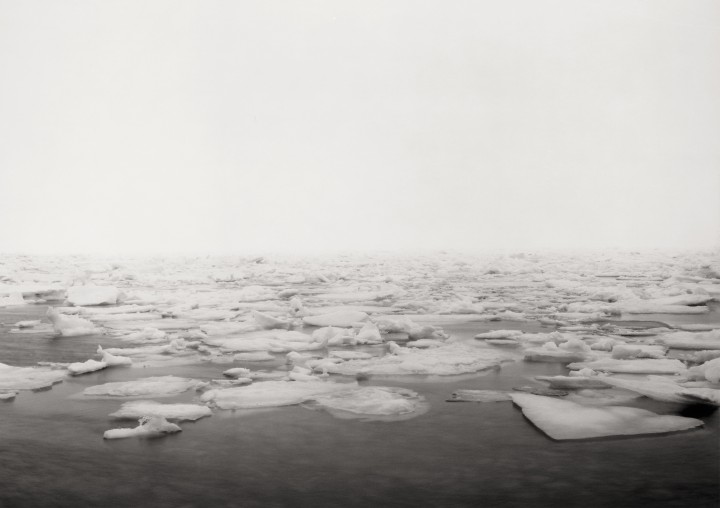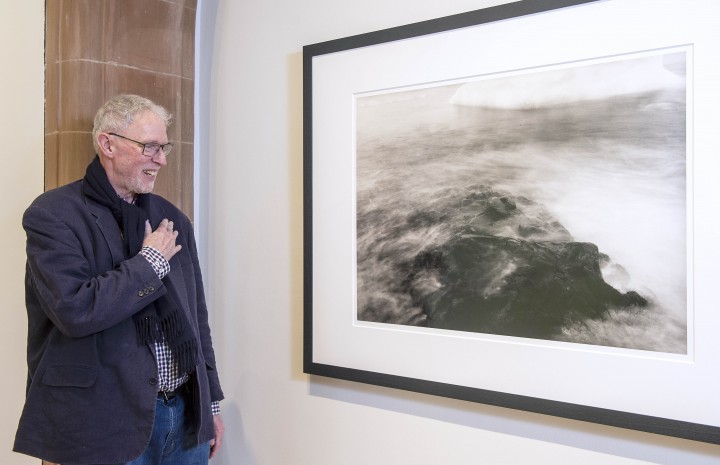Scottish Art News
Latest news
Magazine
News & Press
Publications
Thomas Joshua Cooper: The World’s Edge
By Susan Mansfield, 09.09.2021

For the last 30 years, Thomas Joshua Cooper, who founded and runs the Fine Art Photography department at Glasgow School of Art, has been engaged in a singular mission, to map pictorially the edges of the Atlantic Ocean. It has taken him to the extremities of Europe, Africa and the Americas, to areas of wilderness still marked on maps as “Uncharted Dangers” and to unpopulated islands (he was given the right to name one after his wife Catherine). He is the only photographer to have made images at both North and South poles.
He walked for 36 hours, carrying 40kg of equipment, to the north most point of continental Europe on the Barents Sea. At Cabo de Santo Agostino in Brazil, he was nearly swept away by a giant wave, just managing to save himself and his camera from the waters (he is a non-swimmer). In a 23-day whiteout in Antarctica, he took an image (it is pure white) with the help of seven people to keep him and his camera steady in 60-80mph winds.
All the more remarkably, he does all this with a 1898 wooden Agfa Ansco 5x7 camera and makes only one exposure at each location, not knowing, until he returns to his Glasgow darkroom, whether or not the image has succeeded.

However, if all this makes The World’s Edge sound like photography as extreme sport, this is not the case. The methodology behind the images currently on show in magnificent large format at the Scottish National Portrait Gallery is careful and precise, and the images themselves quiet and mysterious. Often, they show water and rocks, sometimes water and icebergs. There are empty of human beings, and therefore timeless, capturing something which feels immense, but doing so intimately.
Cooper is interested in the early explorers, and the colonisation of the New World by the Old. He also seeks out specific historical moments: Robben Island, Cape Town, on Freedom Day, which commemorates the first post-apartheid election; Cape Trafalgar on the anniversary of the Battle of Trafalgar. While he is not pushing an environmental agenda, we are reminded that every single one of the places photographed will be under water in 35 years.
Ultimately, however, this is a visual art project, more than a conceptual or geographical one. At the centre is a group of striking photographs, capturing the textures of land and water, the changing qualities of weather and light. Each one records a specific moment: a glimpse of the ocean through rocks at Mizen Head, clouded moonlight at Cape Trafalgar. Fascinating as the background is, even without it, the work has the power to captivate.
 Thomas Joshua Cooper in the Scottish National Portrait Gallery, launching his exhibition The World’s Edge, open from 31 July 2021 until 23 Jan 2022. Photos by Neil Hanna.
Thomas Joshua Cooper in the Scottish National Portrait Gallery, launching his exhibition The World’s Edge, open from 31 July 2021 until 23 Jan 2022. Photos by Neil Hanna.
Thomas Joshua Cooper | The World's Edge is on at the Scottish National Portrait Gallery until 23rd January 2022




